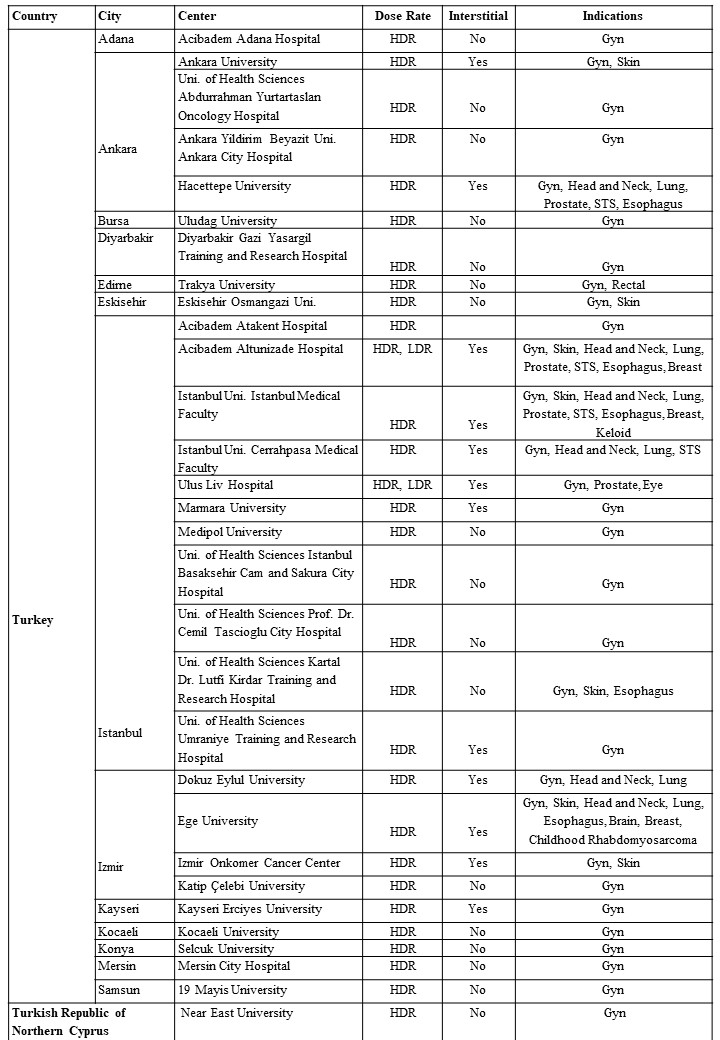Current Situation of Brachytherapy in Turkey
PO-1090
Abstract
Current Situation of Brachytherapy in Turkey
1On behalf of the Turkish Society of Radiation Oncology Brachytherapy Group, Eskisehir Osmangazi University, Department of Radiation Oncology, Eskisehir, Turkey
Show Affiliations
Hide Affiliations
Purpose or Objective
Brachytherapy is an important part of cancer treatment. We aimed to evaluate the current situation of brachytherapy treatment in Turkey according to the information received from the members of the Turkish Society of Radiation Oncology Brachytherapy Group.
Material and Methods
To achieve our purpose, we sent an excel data sheet to the group members to identify and record the brachytherapy capabilities of the centers in Turkey.
Results
According to the information obtained from the Turkish Radiation Oncology Society and International Atom Energy Agency website, we contacted 32 radiotherapy centers containing brachytherapy units, and 30 centers from Turkey and the Turkish Republic of Northern Cyprus shared their information. The facilities of the brachytherapy centers are listed in Table 1. The oldest brachytherapy center is established in 1935. All centers are associated with the university except one. 63% (n =19) of the centers are located in the 3 big cities such as Istanbul, Ankara, and Izmir. All centers reported that they perform 3-dimensional HDR brachytherapy using the Ir192 radioactive source. All centers perform gynecological brachytherapy. LDR brachytherapy is available in 2 centers. There is no center that performs PDR brachytherapy. There are only two centers applying eye plaque application. Although skin brachytherapy is the second most common application type for centers, Head and Neck, Lung, Prostate, STS, Esophagus, and Breast cancer are other brachytherapy indications of some centers. The mostly used fractionations are 4 fr x 7 Gy, 5 fr x 5.5 Gy, and 5 fr x 6 Gy in cervix cancer patients treated with definitively and the mostly used fractionations are 3 fr x 6-7 Gy and 5 fr x 5.5 Gy in endometrial cancer patients treated with postoperatively.
Table 1. Brachytherapy centers and features

Conclusion
Apart from the incoming data from the centers, it is known that there is a Co60 radioactive source in 1 center in Istanbul, and 2 centers in Istanbul and Adana did not share their information. The absence of centers performing brachytherapy in some of the regions draws attention to the need for proper national health planning. In addition to this, specific brachytherapy applications should be distributed in a balanced across the country.